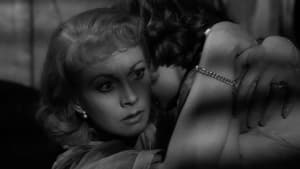Contact: info@alwanfilm.com
Video Sources 0 Views
- Watch trailer
- A Streetcar Named Desire


Synopsis
Table of Contents
ToggleReview: A Streetcar Named Desire 1951 Colorized – A Captivating Adaptation of Tennessee Williams’ Masterpiece

Introduction
A Streetcar Named Desire, released in 1951, stands as a powerful adaptation of Tennessee Williams’ iconic play, exploring themes of desire, decay, and the clash of cultures in post-war America. Directed by Elia Kazan, this film boasts stellar performances and a hauntingly atmospheric portrayal of New Orleans’ French Quarter. In this review, we’ll delve into the enduring legacy of A Streetcar Named Desire and its exploration of the human condition.
Check The Full Colorized Movies List
Check Our Colorized Movies Trailer Channel
Understanding A Streetcar Named Desire 1951 Colorized: Director, Cast, and Genre
Directed by Elia Kazan, A Streetcar Named Desire features a talented ensemble cast including Marlon Brando as Stanley Kowalski, Vivien Leigh as Blanche DuBois, and Kim Hunter as Stella Kowalski. The film falls within the genre of drama, known for its intense character-driven narratives and exploration of complex psychological themes.
Exploring the World of A Streetcar Named Desire 1951 Colorized: Plot and Characters
A Streetcar Named Desire unfolds as Blanche DuBois, a troubled and fragile woman, arrives in New Orleans to stay with her sister Stella and her husband Stanley. As tensions simmer and past traumas resurface, Blanche finds herself caught in a downward spiral of desire, deception, and despair. The film delves into the complexities of human relationships and the destructive power of unbridled passion.
The Art of Film Colorization
While A Streetcar Named Desire was originally filmed in black and white, its early colorized version adds a new layer of visual richness and depth to its atmospheric portrayal of New Orleans’ French Quarter. The colorization process enhances the film’s visual impact and captures the vibrant beauty of its setting with stunning visual clarity.
Early Colored Films: A Brief History
The history of early colored films is marked by innovation and experimentation as filmmakers sought to enhance the visual appeal of their movies. From hand-tinted frames to pioneering technicolor processes, the evolution of colorization techniques transformed the cinematic landscape, offering audiences a new way to experience classic stories and immersive settings.
A Streetcar Named Desire (1951) and Its Early Colored Version
The decision to release A Streetcar Named Desire in a colorized format was made with the intention of immersing audiences in the vibrant world of New Orleans and enhancing the film’s visual impact. While some purists may prefer the original black and white version, the early colorized edition of the film adds a new dimension to its storytelling and captures the atmospheric beauty of its setting with stunning visual clarity.
The Debate Over Film Colorization
The debate over film colorization continues to divide audiences and industry professionals alike. While some argue that colorization breathes new life into classic films and makes them more accessible to modern audiences, others maintain that it compromises the artistic integrity of the original work. As technology advances and filmmaking techniques evolve, the debate over colorization remains a topic of ongoing discussion within the film community.
Examining A Streetcar Named Desire (1951) as an Early Colored Film
Viewing A Streetcar Named Desire in its early colorized iteration offers audiences a fresh perspective on its atmospheric portrayal of New Orleans’ French Quarter. The colorization process enhances the film’s visual impact and captures the vibrant beauty of its setting with stunning visual clarity. As Blanche DuBois navigates the complexities of desire and despair, the audience is drawn into a world of emotional turmoil and psychological tension that resonates with timeless relevance.
Influence and Legacy: A Streetcar Named Desire (1951)’s Impact on Cinema
A Streetcar Named Desire is widely regarded as a seminal work of American cinema, praised for its powerful performances, haunting atmosphere, and exploration of complex psychological themes. Its enduring legacy continues to inspire filmmakers and artists across generations, influencing the depiction of desire, decay, and the clash of cultures in literature, theater, and film. As a testament to its enduring relevance, A Streetcar Named Desire remains a timeless masterpiece that continues to captivate audiences with its gripping narrative and unforgettable characters.
Director’s Cinematic Legacy: Beyond A Streetcar Named Desire 1951 Colorized
Elia Kazan’s directorial legacy extends far beyond A Streetcar Named Desire, encompassing a diverse body of work that explores a wide range of themes and genres. As a filmmaker, Kazan was known for his insightful character studies, atmospheric storytelling, and uncompromising dedication to his craft. A Streetcar Named Desire stands as a testament to his talent and creativity, solidifying his reputation as one of the great directors of his time.
Themes Explored in A Streetcar Named Desire 1951 Colorized
At its core, A Streetcar Named Desire explores themes of desire, decay, and the clash of cultures in post-war America. Through its vivid characters and atmospheric setting, the film delves into the complexities of human relationships and the destructive power of unbridled passion. As Blanche DuBois confronts her inner demons and grapples with the harsh realities of life, the audience is drawn into a world of emotional turmoil and psychological tension that resonates with timeless relevance.
Reception and Controversy Surrounding A Streetcar Named Desire 1951 Colorized
Upon its release, A Streetcar Named Desire received widespread critical acclaim for its powerful performances, haunting atmosphere, and exploration of complex psychological themes. However, the decision to release the film in a colorized format sparked debate among fans and critics alike. While some praised the colorization process for enhancing the film’s visual impact, others questioned its necessity and expressed concern about preserving the integrity of Kazan’s original vision.
Where to Watch A Streetcar Named Desire 1951 Colorized Online
For those eager to experience A Streetcar Named Desire for themselves, the film is readily available on popular streaming platforms such as Amazon Prime Video, Google Play Movies, and iTunes. Whether viewed in its original black and white format or its early colorized iteration, A Streetcar Named Desire offers a captivating and atmospheric cinematic experience that is sure to resonate with audiences.
FAQs About A Streetcar Named Desire 1951 Colorized
1. Is A Streetcar Named Desire based on a true story?
No, A Streetcar Named Desire is a fictionalized portrayal of the clash of cultures and the destructive power of unbridled passion in post-war America. While the characters and storyline are works of fiction, the film’s exploration of complex psychological themes draws inspiration from real-life experiences and universal human experiences.
2. Who starred in A Streetcar Named Desire?
A Streetcar Named Desire stars Marlon Brando as Stanley Kowalski, Vivien Leigh as Blanche DuBois, and Kim Hunter as Stella Kowalski. Their compelling performances bring depth and authenticity to their respective roles, elevating the emotional resonance of the film and capturing the complexities of human nature with stunning clarity.
3. What is the central message of A Streetcar Named Desire?
At its core, A Streetcar Named Desire delivers a powerful message about the destructive power of unbridled passion and the clash of cultures in post-war America. Through its vivid characters and atmospheric setting, the film challenges viewers to confront their own beliefs and assumptions about desire, decay, and the human condition.
4. Why was A Streetcar Named Desire released in a colorized format?
The decision to release A Streetcar Named Desire in a colorized format was made with the intention of immersing audiences in the vibrant world of New Orleans and enhancing the film’s visual impact. While some purists may prefer the original black and white version, the early colorized edition of the film adds a new dimension to its storytelling and captures the atmospheric beauty of its setting with stunning visual clarity.
5. What is the legacy of A Streetcar Named Desire?
A Streetcar Named Desire is widely regarded as a seminal work of American cinema, praised for its powerful performances, haunting atmosphere, and exploration of complex psychological themes. Its enduring legacy continues to inspire filmmakers and artists across generations, reaffirming its status as a timeless masterpiece of drama.
6. Are there any sequels or remakes of A Streetcar Named Desire?
While there have been adaptations and reinterpretations of A Streetcar Named Desire for the stage and screen, including a 1995 television movie starring Alec Baldwin and Jessica Lange, none have achieved the same level of critical acclaim or cultural significance as the original 1951 film. However, the enduring legacy of A Streetcar Named Desire continues to resonate with audiences worldwide, reaffirming its status as a timeless masterpiece of drama.
7. Where can I watch A Streetcar Named Desire online?
For those eager to experience A Streetcar Named Desire for themselves, the film is readily available on popular streaming platforms such as Amazon Prime Video, Google Play Movies, and iTunes. Whether viewed in its original black and white format or its early colorized iteration, A Streetcar Named Desire offers a captivating and atmospheric cinematic experience that is sure to resonate with audiences.
Conclusion
In conclusion, A Streetcar Named Desire (1951) remains a timeless masterpiece of drama that explores themes of desire, decay, and the clash of cultures in post-war America. Whether viewed in its original black and white format or its early colorized iteration, Elia Kazan’s hauntingly atmospheric adaptation of Tennessee Williams’ iconic play offers a captivating and thought-provoking exploration of the human condition.
As Blanche DuBois confronts her inner demons and grapples with the harsh realities of life, the audience is drawn into a world of emotional turmoil and psychological tension that resonates with timeless relevance. With its powerful performances, haunting atmosphere, and exploration of complex psychological themes, A Streetcar Named Desire continues to captivate audiences with its gripping narrative and unforgettable characters, reaffirming its status as a timeless classic of American cinema.




















